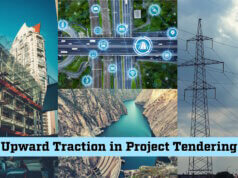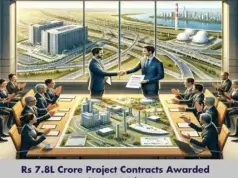[metaslider id=8276]

Co-founder and Group CEO
Secutech Automation (India) Pvt. Ltd
India is one of the fastest growing countries in terms of its real estate landscape which comprises offices, shopping complexes, hotels, data centres, hospitals etc. Along with this growth comes a major responsibility towards Environmental Sustainability. Statistically, over 50 per cent of the energy generated is consumed by commercial buildings. In short, if we are able to optimise our energy consumption in commercial buildings, we can contribute a great amount towards environmental sustainability.Needless to say, technology plays an extremely crucial role in ensuring optimised energy consumption in buildings. Along with technology, people and processes play an equally important role in contributing towards a more environmentally sustainable building.The technology that is deployed in these buildings must cater to the requirements of all the 3Os of the building – the Owner, the Operator and the Occupant. Let’s have a look at some real world examples when it comes to this.
The Owner
Often, the key decision maker when it comes to understanding the vision and message that the building must portray. Corporates and developers constitute more than 80 per cent of the landscape of commercial buildings in India.
Of late, corporates have decided to go for green buildings as a part of their corporate social responsibility in an attempt to enhance their image as a responsible company in the eyes of their stakeholders.
Developers, on the other hand, have also moved away from the ‘Build & Sale’ model to a ‘Build & Lease’ model. To attract customers to their building and in an attempt to reduce overhead expenses through operational efficiency, these buildings too are moving towards being Green.
The technology decision for an owner essentially revolves around the design and the efficiency factor of the equipment they purchase like chillers, AHUs, DGs, lights, elevators etc. Most equipment these days publish their energy efficiency factor making it easy for owners to choose the best.
Building energy simulators further help building owners to evaluate their proposed energy performance as against the ASHRAE 90.1-2007 standards, making it very easy to incorporate necessary modifications in the design stages itself before the building is constructed. Another tool that assists building owners is a Building Information Modelling (BIM) system. BIM is a data repository of building design, construction and maintenance information combined in one convenient model that enables building owners to make quick and effective decision concerning their buildings efficiency and environmental sustainability.
The Operator
The key to a building’s efficiency lies in its operations. Most often than not, building owners tend to ignore this domain assuming that since the equipment purchased is energy efficient, they continue to perform that way during their complete lifecycle.
A real life example is that of a car. A car owner painstakingly decides upon the correct model of his car after a thorough market research that is based on fuel efficiency and maintenance cost being one of the most important criteria. Upon realising that the average advertised in the brochure vs. the actual differs greatly, the car owner then starts to investigate the reasons for poor efficiency. He soon realises that either his driver slept with the AC on, drove the car inefficiently, didn’t maintain proper air pressure in the tyres, used poor quality oil etc. All these factors contributed towards operational inefficiency resulting in the average of the car to drop down considerably. Had all this information been made available to the car owner or its driver in real time through intelligent computer displays, which is now a common feature on most cars today, the problems could have been arrested and fixed in real time.
Building operators contribute heavily towards energy performance in a building. Through the support of technology, building operators can ensure the highest level of performance efficiency in buildings. Building owners invest in building automation systems which can integrate with all equipment like chillers, AHUs, VAVs, DG sets, UPS, STP, elevators, lights, electrical systems etc. which can then provide real time information to the building operator with regard to their performance and efficiency.
Building operators can now use energy analytics and predictive analytics tools that further enable them to gain actionable insights by converting raw building performance data into intelligent information. Added to this, building operators can now use 3D modelling which enables them to see the complete statistical analysis of the buildings energy performance on tablets, mobiles or any PC on the network. Facility management software’s further assist building operators in ensuring their equipment’s are serviced on time by mapping the service with real time performance from the building management system.
The Occupant
The occupant plays an extremely important role in helping the building owner and operator execute their environmental sustainability vision of the building. Most often than not building owners and operators do not include building occupants as a part of the energy vision and that by far is the biggest mistake that most buildings face today. The challenge remains on how to get the occupant engaged in making the building Green. This is where technology plays an important role.
Let’s start with the sharing of information. Smart buildings broadcast their energy performance to all occupants through digital signages, portals, SMSs, posters etc. to inform them on how they too can contribute to make the building Greener. Some organisations run a monthly energy score card of the energy performance between floors, departments or buildings. This creates a competitive environment where occupants ensure that their respective area is not wasting any energy, just to win the ‘Most Energy Efficient Department’ recognition.
Sustainability matters at all levels and the deployment of intelligent technology like building management systems, energy analytics, predictive maintenance, fault management systems etc contribute heavily in making the buildings of today green and environmentally sustainable.
(Aditya Prabhu can be reached on aditya@secutechautomation.com)











